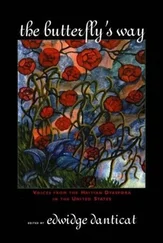Kendric Babcock - The Scandinavian Element in the United States
Здесь есть возможность читать онлайн «Kendric Babcock - The Scandinavian Element in the United States» — ознакомительный отрывок электронной книги совершенно бесплатно, а после прочтения отрывка купить полную версию. В некоторых случаях можно слушать аудио, скачать через торрент в формате fb2 и присутствует краткое содержание. Жанр: foreign_antique, foreign_prose, на английском языке. Описание произведения, (предисловие) а так же отзывы посетителей доступны на портале библиотеки ЛибКат.
- Название:The Scandinavian Element in the United States
- Автор:
- Жанр:
- Год:неизвестен
- ISBN:нет данных
- Рейтинг книги:5 / 5. Голосов: 1
-
Избранное:Добавить в избранное
- Отзывы:
-
Ваша оценка:
- 100
- 1
- 2
- 3
- 4
- 5
The Scandinavian Element in the United States: краткое содержание, описание и аннотация
Предлагаем к чтению аннотацию, описание, краткое содержание или предисловие (зависит от того, что написал сам автор книги «The Scandinavian Element in the United States»). Если вы не нашли необходимую информацию о книге — напишите в комментариях, мы постараемся отыскать её.
The Scandinavian Element in the United States — читать онлайн ознакомительный отрывок
Ниже представлен текст книги, разбитый по страницам. Система сохранения места последней прочитанной страницы, позволяет с удобством читать онлайн бесплатно книгу «The Scandinavian Element in the United States», без необходимости каждый раз заново искать на чём Вы остановились. Поставьте закладку, и сможете в любой момент перейти на страницу, на которой закончили чтение.
Интервал:
Закладка:
70
Brohough, Elling Eielsens Liv og Virksomhed , 10-11, 20-21, 30-36.
71
Anderson, Norwegian Immigration , 50.
72
Billed Magazin , I, 94.
73
Translated from Billed Magazin , I, 18 ff.
74
Ibid. , 6-7.
75
A shipping notice in the Boston Daily Advertiser , Aug. 1, 1839 reads: “Passengers, – in the “Venice” from Gothenburg, 67 Norwegians on their way to Illinois.”
76
An oft-repeated story tells how the company was persuaded to remain in Wisconsin by some enterprising Milwaukee men who pointed out to the immigrants a fat, healthy-looking man as a specimen of what Wisconsin would do for a man, and a lean, sickly-looking man as a warning of what the scorching heats and fever of Illinois would quickly do to a man who settled there. See Billed Magazin , I, 7.
77
Billed Magazin , I, 10.
78
Ibid. , I, 12.
79
Ibid. , I, 18.
80
Ibid. , I, 12.
81
Ibid. ; Anderson, Norwegian Immigration , 280 ff.
82
Langeland, Nordmændene i Amerika , 44; Billed Magazin , I, 13.
83
Anderson, Norwegian Immigration , 326 ff. Anderson quotes in full a letter from the United States Commissioner of Land Office giving date and extent of each entry by Norwegians.
84
M. W. Odland, Amerika , Jan. 15, 1904.
85
Langeland, Nordmændene i Amerika , 44-45; Billed Magazin , I, 13.
86
It may be well to note that the name of Dane county has no relation to Scandinavian settlement, but was given in honor of Nathan Dane of Massachusetts, author of the Northwest Ordinance of 1787.
87
Anderson, Norwegian Immigration , 276.
88
A letter of John E. Molee, February, 1895, quoted by Anderson, Norwegian Immigration , 320. (See also, ibid. , 396-399.)
89
Anderson, Norwegian Immigration , 255.
90
Nelson, Scandinavians in the United States , (2d ed.) 387 ff.
91
Bothne, Kort Udsigt , 835 ff.
92
Jacobs, Evangelical Lutheran Church , 411.
93
Bothne, Kort Udsigt , 835; Jensson, American Lutheran Biographies , “Clausen.”
94
Brohough, Elling Eielsens Liv og Virksomhed , ch. II, and App.
95
Nelson, in his Scandinavians in the United States , 388, is probably mistaken in stating that Eielsen built the first Norwegian church and organized the first congregation in 1842 at Fox River, confusing the fact that Eielsen had built a log house on his own land, and held religious services in the loft, with the possibility of the formation of a congregation. Eielsen’s biographer makes no mention of his organization of a regular congregation. Brohough, Elling Eielsens Liv og Virksomhed , 61.
96
Minde fra Jubelfesterne paa Koshkonong (1894), 54 ff; Bothne, Kort Udsigt , 839-842.
97
Dietrichson, Reise blandt de norske Emigranter , 45 ff; Minde fra Jubelfesterne paa Koshkonong .
98
Nordlyset , Sept. 9, 1847.
99
Dietrichson, Reise blandt de norske Emigranter , 57-67. Some of the church records are printed in The Milwaukee Sentinel , July 21, 1895.
100
The following year he published a second book, Nogle Ord fra Prædikestolen i Amerika .
101
Winsor, Narrative and Critical History of America , IV, 488.
102
Interview with Capt. O. C. Lange in Chicago, March, 1890. He stated that he was the only Swede in Chicago in 1838, but that there were thirty or forty Norwegians “who were doing anything for a living, even begging,” – but Capt. Lange was an ardent Swede and despised Norwegians!
103
Norelius, Svenskarnes Historia , 23-26.
104
Mikkelsen, The Bishop Hill Colony , 26.
105
Norelius, Svenskarnes Historia , 2 ff. The early history of the Swedish immigration is treated in a much more complete and scholarly fashion than is the Norwegian, in the works of Unonius, Norelius, and Peterson and Johnson. For this reason, and because of the similarity of the early Swedish and Norwegian movements, the Swedish settlements are not followed up in this study with the same detail as the Norwegian.
106
Unonius, Minnen , I, 5 ff; History of Waukesha County, Wis. , 748.
107
“and a large proportion of criminals,” Nelson, Scandinavians in the United States , II, 117.
108
History of Waukesha County, Wisconsin , 749.
109
Bremer, Homes of the New World , II, 214-217. Miss Bremer relates how Mrs. von Schneidau “had seen her first-born little one frozen to death in its bed,” and how Mrs. Unonius “that gay, high-spirited girl, of whom I heard when she was married at Upsala to accompany her husband to the New World … had laid four children to rest in foreign soil.”
110
Ibid. , 225-235.
111
Ibid. , 225; Unonius, Minnen , II, 6 ff.
112
Bremer, Homes of the New World , II, 214.
113
Norelius, Svenskarnes Historia , 27.
114
G. T. Flom, “Early Swedish Immigration to Iowa,” Iowa Journal of History and Politics , III, 601 ff. (Oct., 1905); Norelius, Svenskarnes Historia , 27.
115
Norelius, Svenskarnes Historia , 21.
116
Ibid. , 24-26; Johnson and Peterson, Svenskarne i Illinois , 286.
117
Norelius, Svenskarnes Historia , 21, 23-26.
118
The history of this Swedish settlement, with its numerous peculiarities, its prosperity and its misfortunes, has been so often written up with considerable detail, that only the outlines of it are given here. See Bibliography.
119
Mikkelsen, The Bishop Hill Colony , 19 ff.
120
Ibid. , 25. “The glory of the work which is to be accomplished by Eric Janson, standing in Christ’s stead, shall far exceed that of the work accomplished by Jesus and his Apostles,” – quoted in translation by Mikkelsen from Cateches, of Eric Janson (Söderhamn, 1846), 80.
121
Mikkelsen, The Bishop Hill Colony , 22; Norelius, Svenskarnes Historia , 63.
122
Интервал:
Закладка:
Похожие книги на «The Scandinavian Element in the United States»
Представляем Вашему вниманию похожие книги на «The Scandinavian Element in the United States» списком для выбора. Мы отобрали схожую по названию и смыслу литературу в надежде предоставить читателям больше вариантов отыскать новые, интересные, ещё непрочитанные произведения.
Обсуждение, отзывы о книге «The Scandinavian Element in the United States» и просто собственные мнения читателей. Оставьте ваши комментарии, напишите, что Вы думаете о произведении, его смысле или главных героях. Укажите что конкретно понравилось, а что нет, и почему Вы так считаете.












